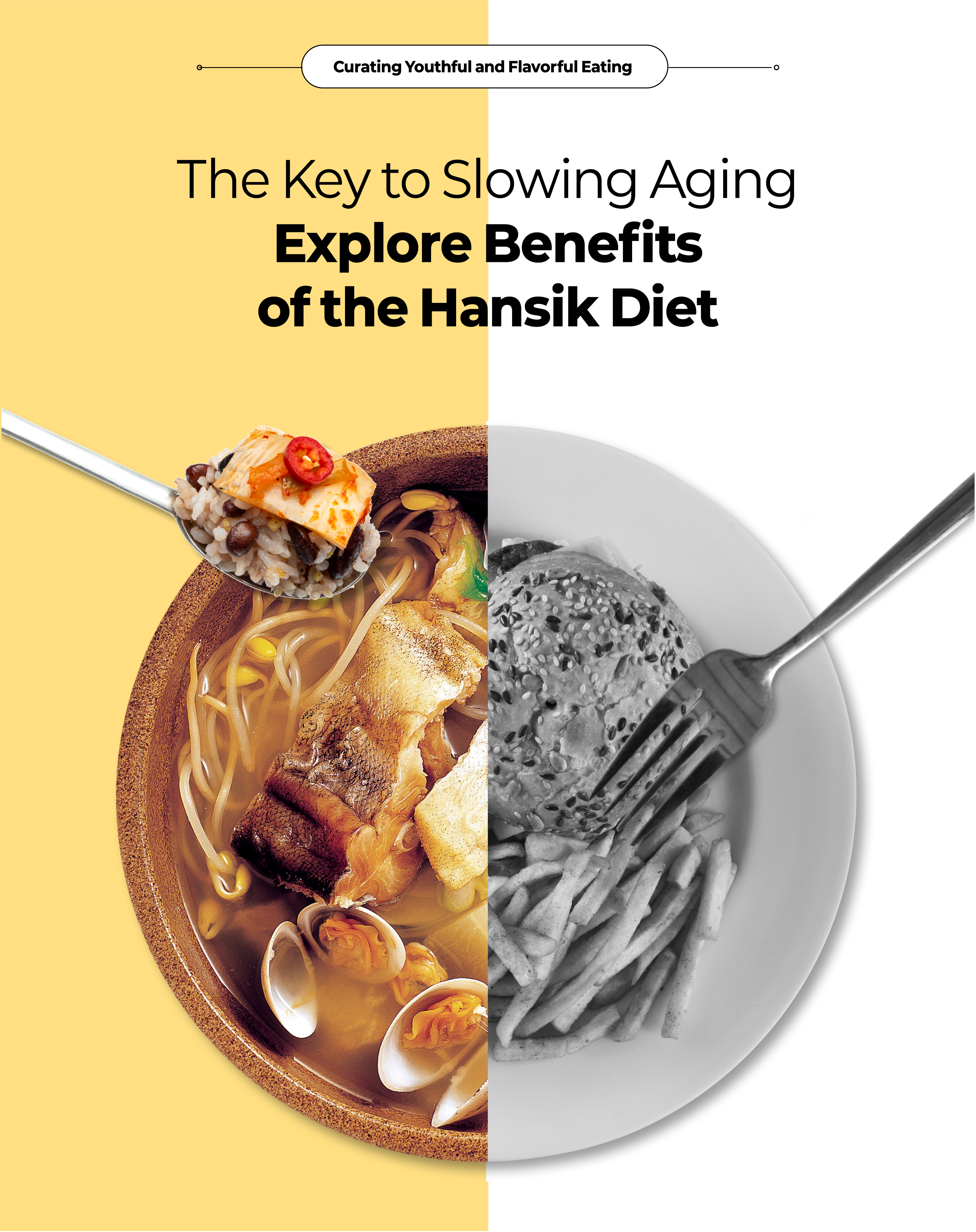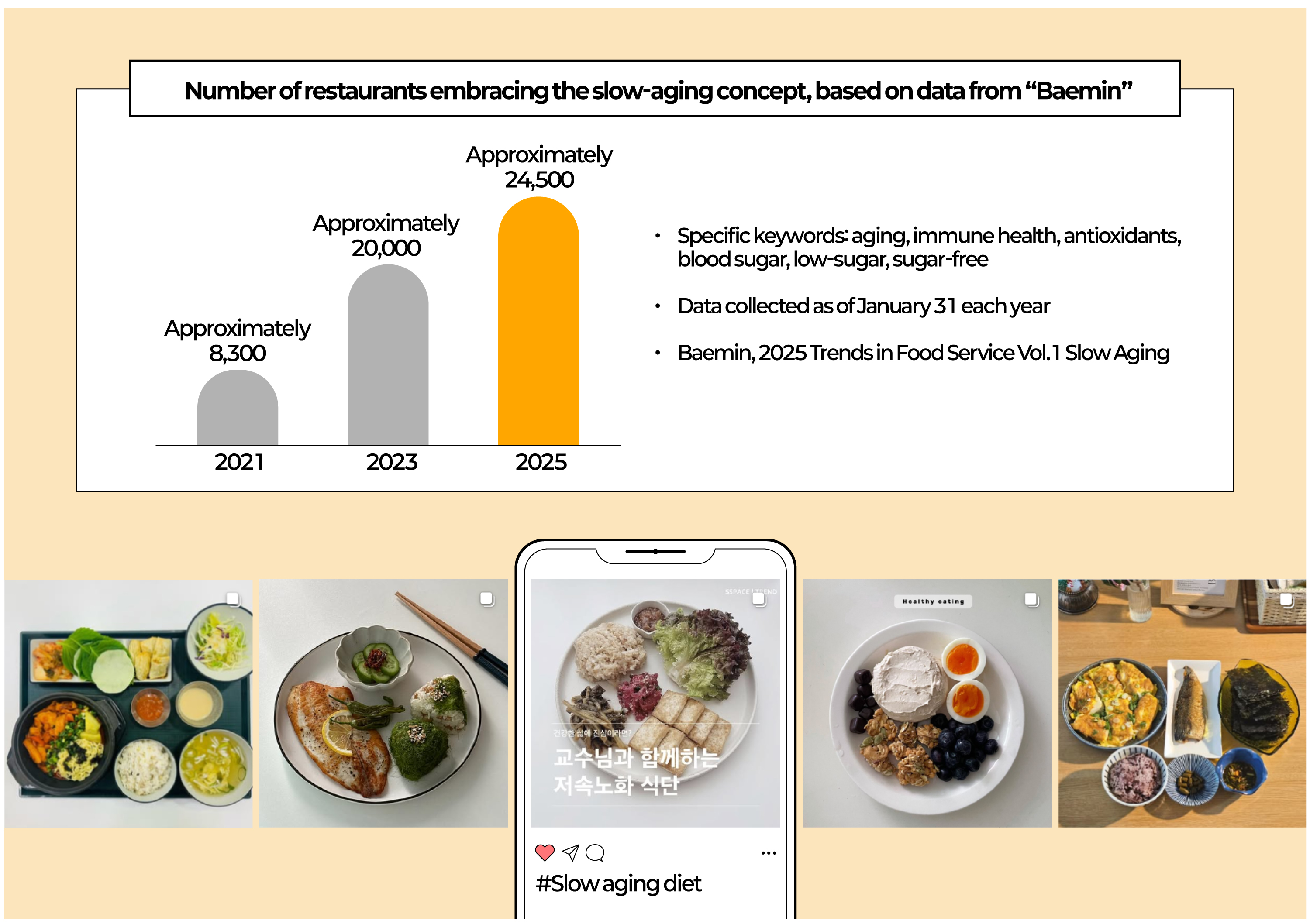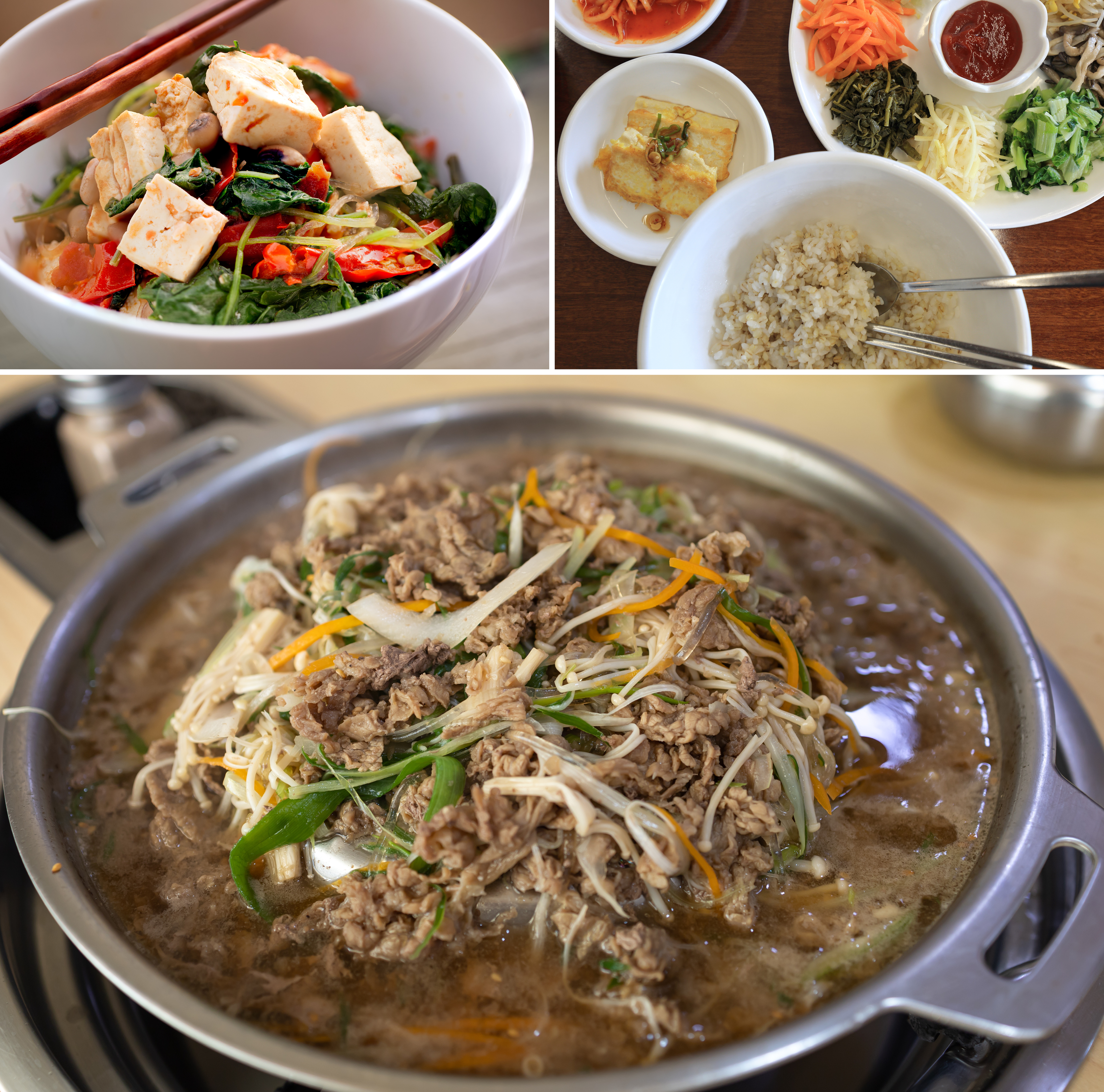한식 읽기 좋은 날
The Key to Slowing Aging: Explore Benefits of the Hansik Diet
Curating Youthful and Flavorful Eating

Just as the First Emperor of Qin, Qin Shi Huang, sought the elixir of immortality and Cleopatra endeavored to preserve her youth, humankind has long been fascinated with defying the aging process. Today, that timeless desire is resurfacing under the concept of “slow aging.” Once limited to the beauty industry, slow aging has now emerged as a major influence across food culture and beyond. In this text, we will explore the rising trend of the so-called “slow-aging diet,” which focuses on maintaining health and delaying aging through everyday eating habits — without the need for costly aesthetic procedures or extreme diets. We will also uncover the potential of Hansik as a key driving force behind this effect.
The Widespread Enthusiasm for a Shift Toward Youthful Eating Habits

The concept of “slow aging” first gained attention in the mid-2010s, when biotechnology companies in Silicon Valley began researching ways to extend human lifespan. Unlike the traditional “anti-aging” efforts that focused mainly on appearance and cosmetic care, slow aging takes a more fundamental approach. It aims to decelerate the aging process itself through everyday practices such as diet, exercise, sleep, and stress management.
Among the many approaches to slow aging, the “slow aging diet” began gaining traction in Korea during the latter half of 2024, fueled by the spread of related posts on social media. Its core idea is that simply adjusting one’s eating habits can help delay the aging process. Typical practices include swapping white rice for mixed grains, choosing olive oil over other types of cooking oils, and cutting back on sugars, refined carbohydrates, and ultra-processed foods. The main anticipated benefits are maintaining long-term health by managing weight and lowering the risk of adult-onset diseases.

The slow-aging diet is rapidly gaining popularity not only among the elderly and middle-aged but also among health-conscious Gen Z. Its appeal lies in its reputation as a “cost-effective health management strategy,” offering an easy-to-adopt approach without requiring significant time, money, or willpower. As new food trends become woven into daily life, noticeable shifts are also taking place within the food industry. According to a survey by Baemin, a leading food delivery app, the number of restaurants highlighting themes like “slow aging,” “immunity,” and “antioxidants” grew from around 8,300 in 2021 to approximately 24,500 by January 2025 — nearly a threefold increase in just four years. Social media is also buzzing, with tens of thousands of posts showcasing recipes and meal diaries under the hashtag “slow aging diet.”
Hansik: The Oldest Slow-Aging Diet — Unlocking Its Timeless Secrets

Interestingly, the key benefits promoted by today’s popular slow-aging diet have long been embedded in traditional Hansik. Fermented foods like soybean paste (doenjang), rich soybean paste (cheonggukjang), and kimchi are especially notable for supporting intestine health and boosting the immune system. Meanwhile, vegetables (namul), algae, and Steamed Multi-grain Rice abound in polyphenols and beta-carotene — powerful natural antioxidants that are highly effective in slowing the aging process.
Hansik is especially effective in preventing "blood sugar (glucose) spikes," a key factor linked to aging. By emphasizing ingredients high in dietary fiber—such as a variety of salads and vegetables—it helps promote a feeling of fullness, reduces overall food intake, and slows the absorption of carbohydrates, thereby helping to maintain stable blood sugar levels. In short, Hansik has long embodied the principles of a healthy diet aimed at slowing the aging process.

The cooking methods used in Hansik further accentuates its role as a diet for slow aging. Time-intensive, fermented foods like traditional Korean sauces and pastes (jang) and kimchi help preserve and even enhance the nutritional value of ingredients while supporting a diverse gut microbiome. In contrast to today’s fast-paced food culture focused on quick preparation and consumption, Hansik’s emphasis on time, care, and deliberate preparation aligns closely with the principles of a slow, healthy, and slow-aging lifestyle.

Since Hansik’s potential as a slow-aging diet gains recognition, there is a growing movement to integrate it into everyday meals. Various Hansik dishes are being reimagined as part of a slow-aging approach, with recipes tailored for each mealtime. For breakfast, options like stir-fried glass noodles with tofu and vegetables(Tofu japchae) featuring a low glycemic index, and “Steamed barley bibimbap,” low in carbohydrates, are suggested. For lunch, “Grilled saury with garlic,” rich in protein and omega-3 fatty acids, is highlighted. For dinner, “Stir-fried beef bulgogi with mushrooms,” packed with protein and antioxidants, is recommended.
For a graceful journey toward slow and healthy aging
While aging is an inevitable part of life, the speed at which it unfolds can be influenced by personal choices. A slow-aging diet offers a powerful means to help regulate the aging process while improving overall quality of life. Interestingly, Hansik has held this wisdom all along. Now is the time to blend the flavors and insights of tradition with modern values, embracing a lifestyle that celebrates both taste and longevity. On the table prepared for slow and healthy aging, Hansik takes its rightful place, shining brightly.
References
<Jeong Heewon, The Slow Aging Diet, Taste Books, 2024>, <Jeong Heewon, How to Develop Habits for Slow Aging, Hanbitlife, 2023>, <Baemin, 2025 Trends in Food Service Vol.1 Slow Aging>, <Seoul Economy Daily, "A Shift from ‘Malatanghulu’ to Slow Aging: What is the ‘Slow-Aging Diet’ Gen Z is Enthralled By?” Published on May 29, 2024>










